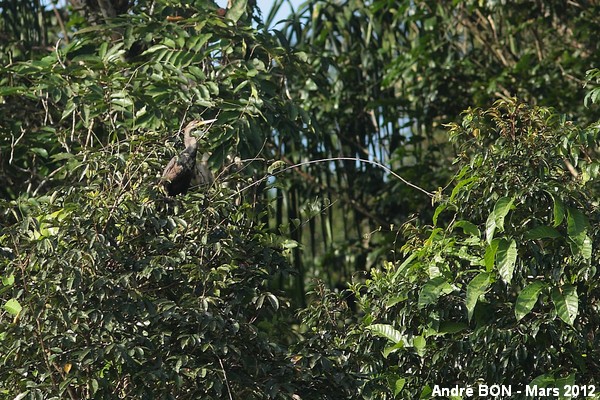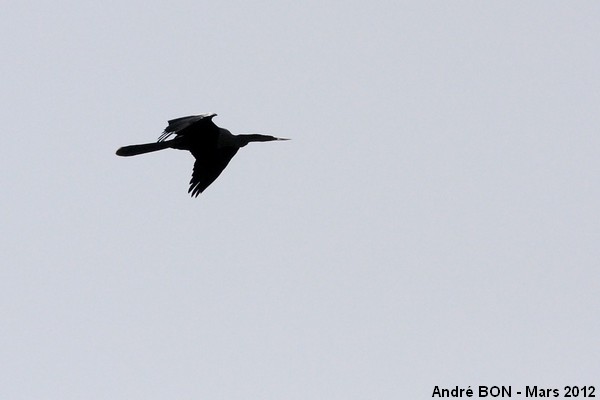

| American Darter (Anhinga anhinga (Linnaeus, 1766)) |


|
|
Scientific name: Anhinga anhinga (Linnaeus, 1766) Common name: American Darter Other names: Snakebird French name: Anhinga d'Amérique Order: Suliformes Family: Anhingidae Size: Body size: 75 to 95 cm ; Wingspan: 114 cm ; Weight: 1250 g. Habitat: Shallow lakes, marshes, rivers and bays bordered by dense vegetation and high trees, in warm regions. Food: Mainly fishes caught while swimming under the surface of water, but also some water invertebrates, some reptiles and amphibians. Nesting: The nest is a platform built between 1 and 6 metres high in the vegetation bordering water. There are 2 to 5 eggs per clutch. At first the parents regurgitate liquid food into the beak of the chicks. When these last ones become a little bigger, they directly feed by introducing their heads into the beak of their parents Migration: Sedentary. Only birds in the extreme northern part and extreme southern part of the range move towards the equator during the cold season. Geographic area: The Anhinga anhinga anhinga subspecies is observed in South America, in Colombia and Ecuador and in the regions located east of the Andes south to northern Argentina. It is also observed in Trinidad and Tobago. The Anhinga anhinga leucogaster subspecies is observed in the south of the United States, in Central America and in Cuba. |
The American Darter resembles a Cormorant. I has a very long neck. It is often used to swimming with its body completely under water. The long neck emerging from water looks like a snake. This is the origin of the common name of Snakebird. Males have a black plumage with a green sheen and shiny pale grey feathers on the head and on the wings. We get the impression of a large silvery patch on the upper side of the wing. The tail, which is often held wide open, ends with a thin whitish border. The bill is thin and straight. It is pale orange yellow with a dark tip. The legs are pale yellow. Females have a pale brown chest, neck and head. Juveniles are a uniform brown colour. The Double-crested Cormorant (Phalacrocorax auritus) and the Neotropic Cormorant (Phalacrocorax olivaceus) have a hooked bill, a thinner tail and they do not show any white patches on the wings. The African and Asian Anhingas have a plumage with some russet colour: Oriental Darter (Anhinga melanogaster) in south-east Asia, African Darter (Anhinga rufa). The Australasian Darter (Anhinga novaehollandiae) has a narrow white stripe on the sides of the head. |
| [To know more about the American Darter] [Next picture] [Top] |

|
I have shot this picture in the marshes of Caw. I have only observed American Darters in the far. This picture is an important crop. |
| [To know more about the American Darter] [Previous picture] [Top] |

|
Picture in flight with a very strong backlighting. |